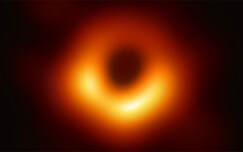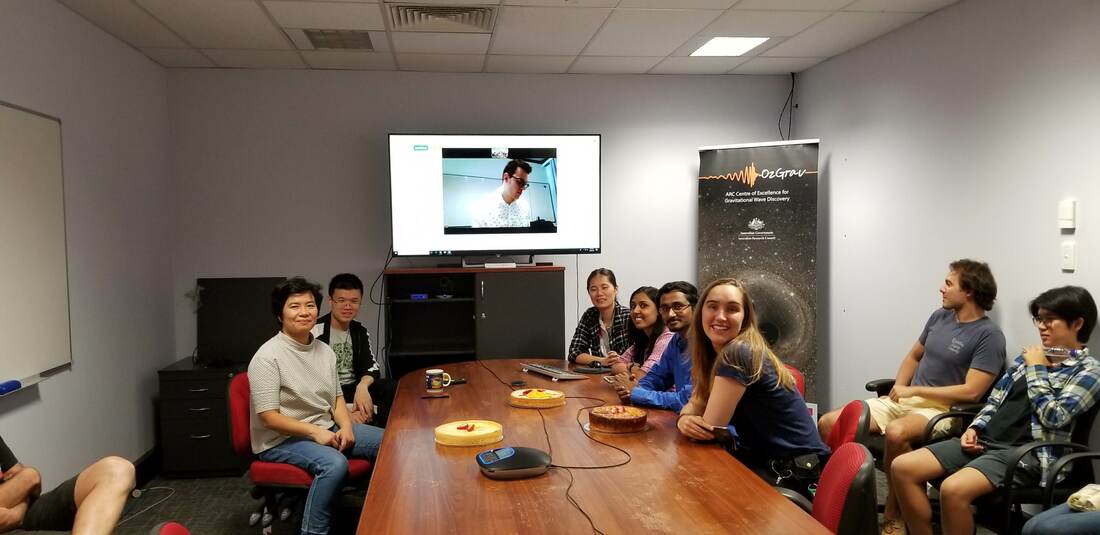|
Ripples of excitement spread through the world of science this week as astronomers revealed the first ever images of a black hole, created using reams of telescope data by MIT's Dr Katie Bouman.
Black holes must rate as one of our Universe's most mysterious phenomena - colossal, monstrous objects that devour any matter and light that dares get too close. The images show "light swirling around the event horizon of a black hole right before falling into it, never to be seen again", UWA's Teresa Slaven-Blair told the AusSMC. "It’s this evidence of light being removed from the Universe that is so amazing." Monash University's Professor Ilya Mandel says that this particular black hole is in Messier 87, a galaxy in the nearby Virgo cluster, and that it weighs "a whopping 6 billion times the mass of the Sun". It lives "more than 50 million light years away", he added. So, how do you snap something in a galaxy far, far away? Swinburne University's Dr Adam Deller says the team behind the image used radio telescopes thousands of kilometres apart and lined up their signals with extraordinary precision, "to around a millionth of a millionth of a second". That allowed them "to make phenomenally sharp images – if your digital camera was this good, you could take a photo of a person hundreds of kilometres away and make out individual strands of hair on their head," he said. "They used this capability to capture the shadow that a supermassive black hole casts – it’s the first time astronomers have ever really 'seen' a black hole." Curtin University's Professor Steven Tingay explained the significance of the images - confirmation of Einstein's theory of General Relativity: "For decades, we have been studying black holes but could only indirectly see the effects of their extreme masses and gravitational fields," he said. "The images show, for the first time, the point close to the black hole from which nothing can escape, even light - the so-called event horizon...confirming the predictions of General Relativity." "Einstein’s theory passes yet another test," confirmed OzGrav's Dr Daniel Reardon. "It's a monster, but a very law-abiding one, precisely following the rules laid out by General Relativity," said Professor Mandel. Read Professor Alister Graham's article in The Conversation: Observing the invisible: the long journey to the first image of a black hole.
0 Comments
Congratulations to Prof Linqing Wen, Dr Qi Chu and the group at UWA, as their SPIIR pipeline officially joins the LIGO-Virgo automatic public alert processing! The SPIIR pipeline also reached another major milestone this week, as it detected the first binary black hole candidate from the LIGO-Virgo 3rd observating run.
SPIIR is an online low-latency real-time search pipeline to detect binary mergers from ground-based detectors. Wen's group harnesses the computational efficiencies of parallel processing using Graphics Processing Units (GPUs) in order to make the detections as fast as possible. This is especially important for mergers that produce electromagnetic radiation that can be observed by telescopes. |
|
- Home
- About
-
Our People
- Chief Investigators
- Partner Investigators
- Associate Investigators
- Postdocs and Students >
- Professional & Outreach staff
- Governance Advisory Committee
- Scientific Advisory Committee
- Executive Committee
- Equity & Diversity Committee
- Early Career Researcher Committee
- Professional Development Committee
- Research Translation Committee
- OzGrav Alumni
- Research Themes
- Education and Outreach
- Events
- News/Media
- Contact Us
- Home
- About
-
Our People
- Chief Investigators
- Partner Investigators
- Associate Investigators
- Postdocs and Students >
- Professional & Outreach staff
- Governance Advisory Committee
- Scientific Advisory Committee
- Executive Committee
- Equity & Diversity Committee
- Early Career Researcher Committee
- Professional Development Committee
- Research Translation Committee
- OzGrav Alumni
- Research Themes
- Education and Outreach
- Events
- News/Media
- Contact Us



 RSS Feed
RSS Feed








